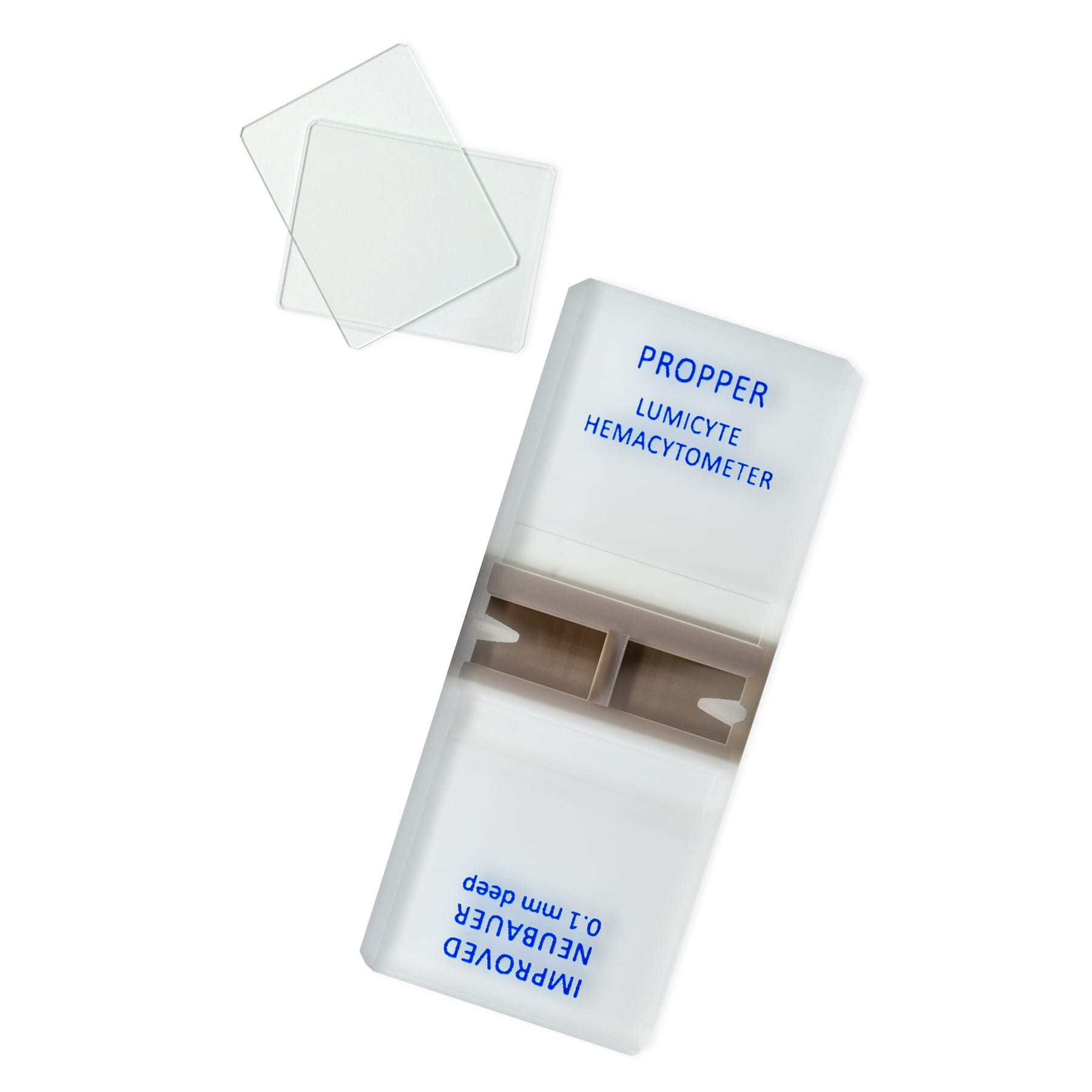Lumicyte™ Blood Counting Chamber
$161.25
Propper’s Blood Counting Chamber provides absolute measuring and counting accuracy.
- Strong adhesive seals the media chamber and slide, preventing well-to-well contamination.
- Well features a hydrophobic border that denies their growth area
Description
Lumicyte™ Blood Counting Chamber (Hemacytometer) provides absolute measuring and counting accuracy in a double-chamber format and counting grids developed by Neubauer. The chamber is sealed and provides high magnification for counting certainty.
- Bright-line metalized counting chamber.
- Designed for high visibility and comfort, especially under low-contrast conditions
- Features improved double Neubauer ruling
- Provides a high degree of accuracy and precision
- Precisely ground for even surface
Propper Hemacytometer Cover Glass serves as a ready-to-use companion with the modern-day hemacytometer double-chamber format of the Propper Blood Counting Chamber.
The Significance of Cell Counting in Various Biological Applications
Cell counting, an essential technique in fields such as microbiology, cell culture, and blood analysis, plays a crucial role in ensuring the success and accuracy of diverse biological experiments.
Cell Counting with Hemacytometer: A Historical Perspective
French anatomist, Louis-Charles Malassez pioneered the technique of cell counting using a hemacytometer in the 19th century. Initially devised for blood cell counts, this method gained prominence due to its accuracy in conditions where automated counters falter, like abnormal blood cell counts.
Versatile Applications of Hemacytometer Cell Counting
Beyond blood cell counts, hemacytometers find utility in various applications, including sperm counts, cell culture assessments tracking cell growth, phytoplankton cell quantification, and more. The hemacytometer’s significance extends to measuring cell size through micrographs, leveraging its known slide dimensions for precise estimations.
Utilizing the Hemacytometer Technique
While the underlying science of cell counting is intricate, the actual utilization of a hemacytometer is relatively straightforward. The device typically features an “H” shape, encompassing two polished grid surfaces within the central chamber, providing a cover slip area.
Once prepared, a sample-filled pipette tip is placed into a v-shaped well of the hemacytometer, and the sample is gently spread over the area. Adding about 10 µl of a specialized liquid under the cover slip ensures proper coverage. This technique allows for loading two samples concurrently, each using one of the two grids.
Subsequently, place the prepared hemacytometer on a microscope stage, to visualize the counting grid at low magnification. After allowing the sample to settle, the counting process commences. Tally all cells within the lines of the large square on the hemacytometer to prevent duplication.
The liquid may be diluted with various substances, depending on the intended outcome of the cell counting. For instance, distinguishing between dead and viable cells might involve using distinct liquid strains.
In conclusion, cell counting through the hemacytometer technique is a fundamental practice in diverse biological application.
The Hemacytometer Cover Glass and Blood Counting Chamber has been an essential tool for medical practitioners and biologists. And “Helping hematologists conquer blood diseases worldwide.” — American Society of Hematology
